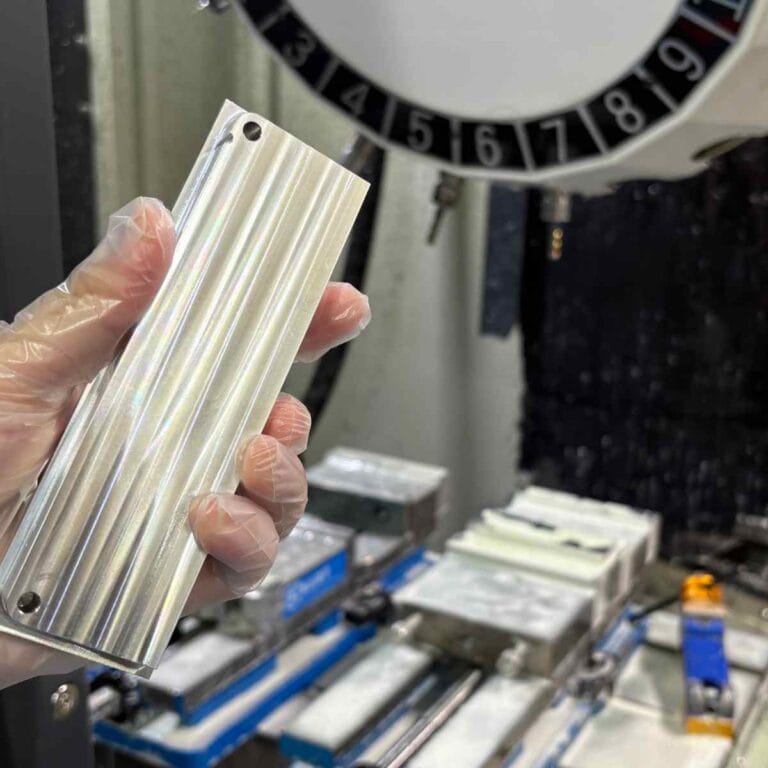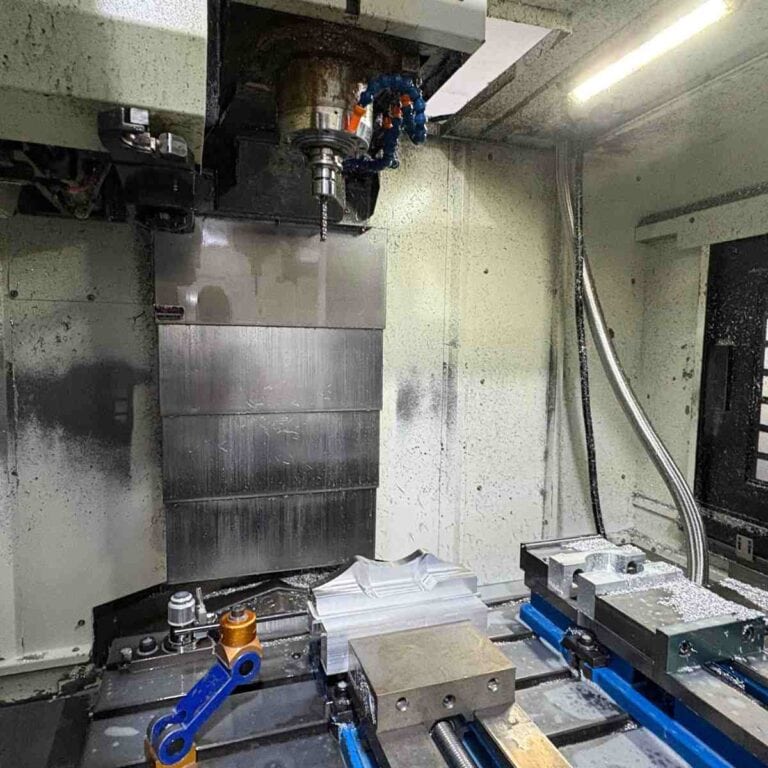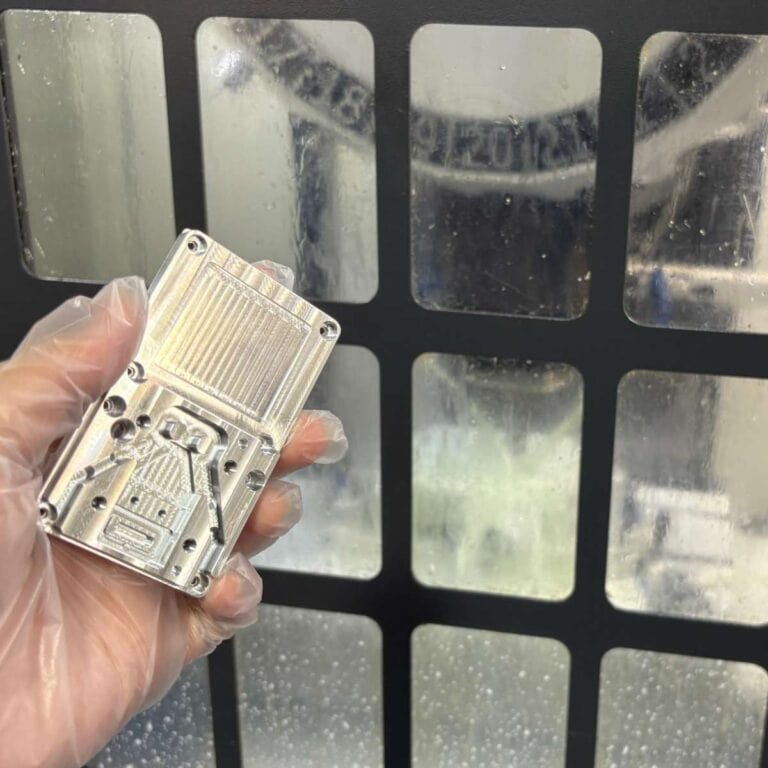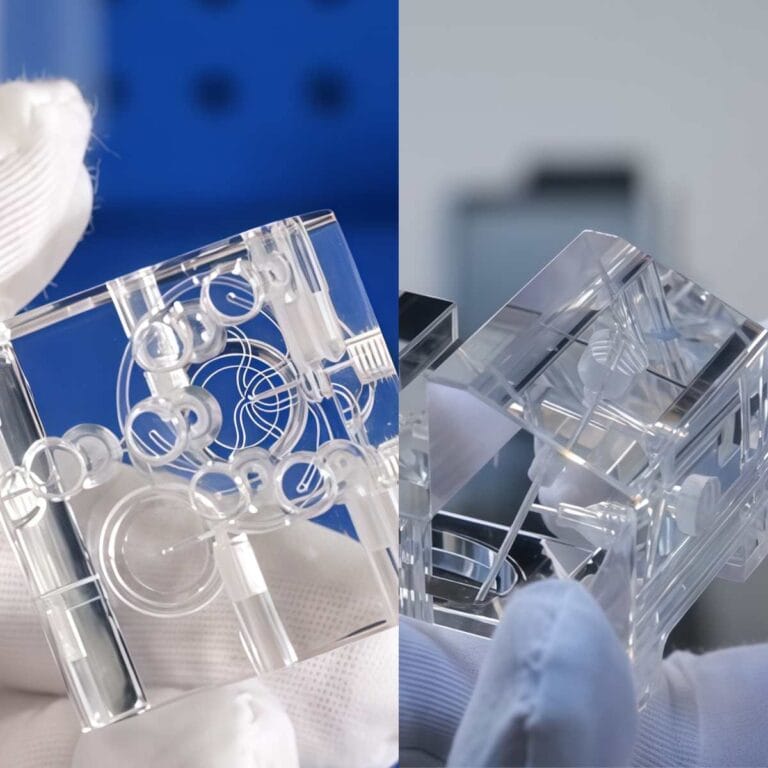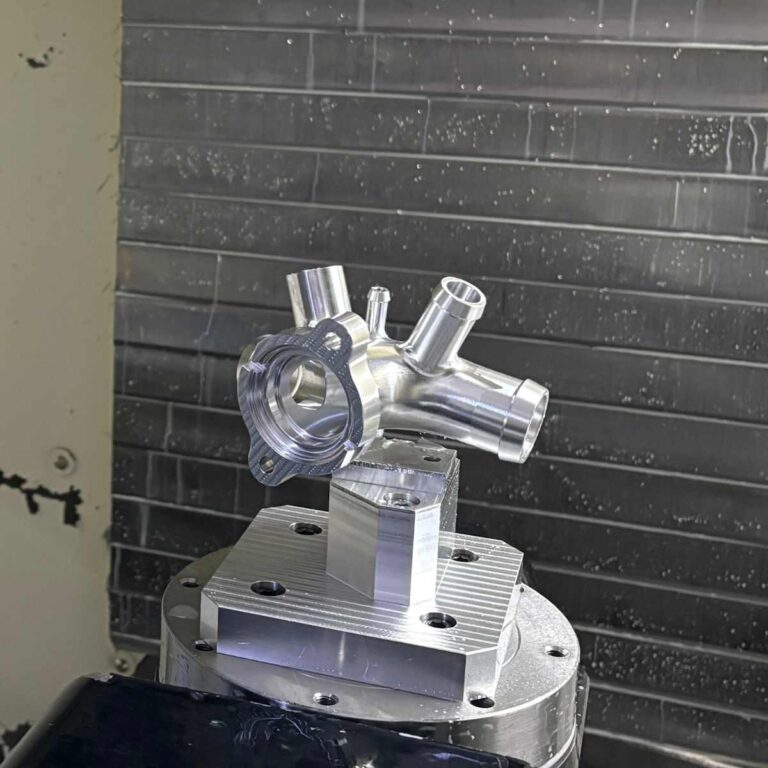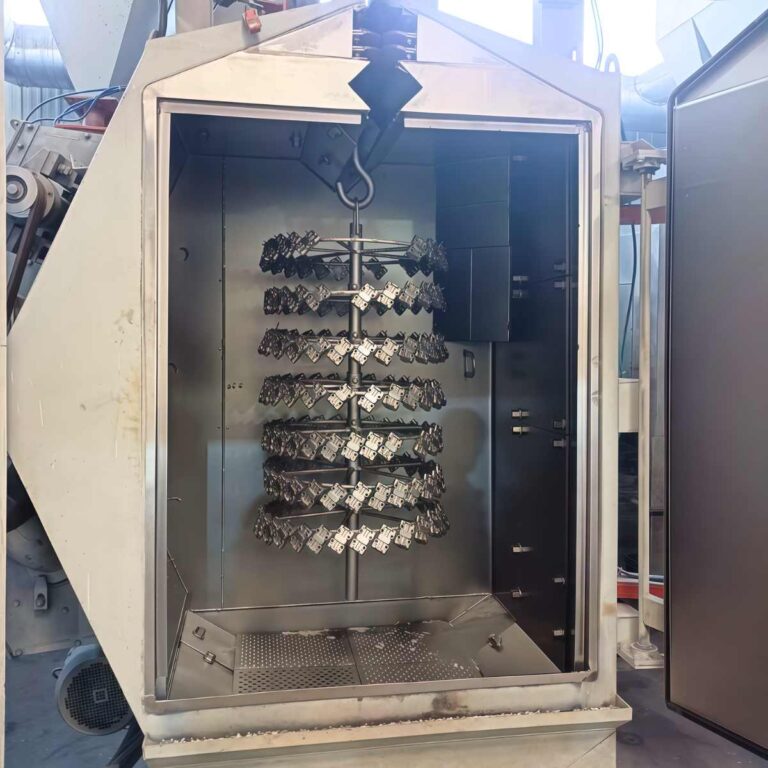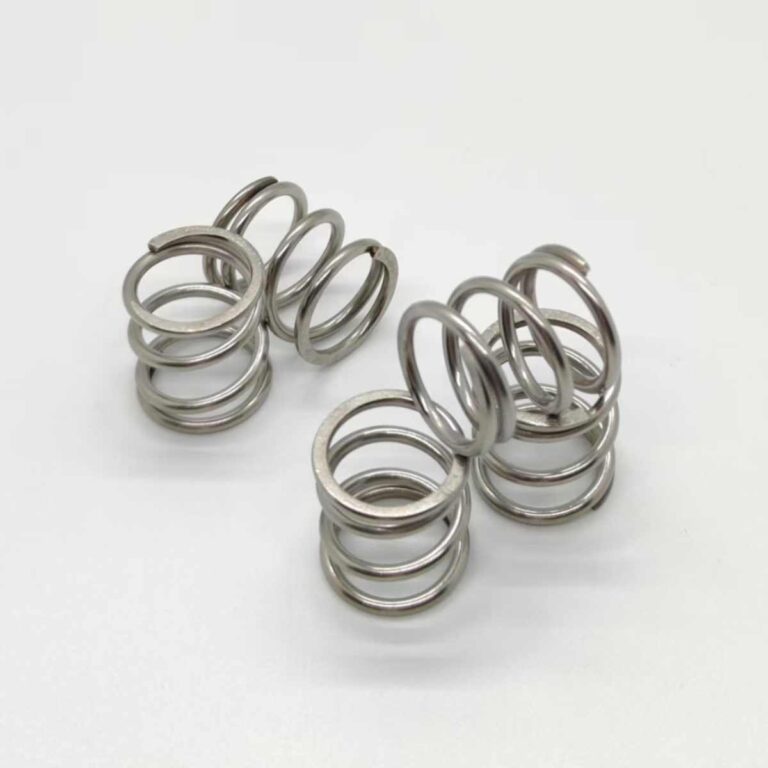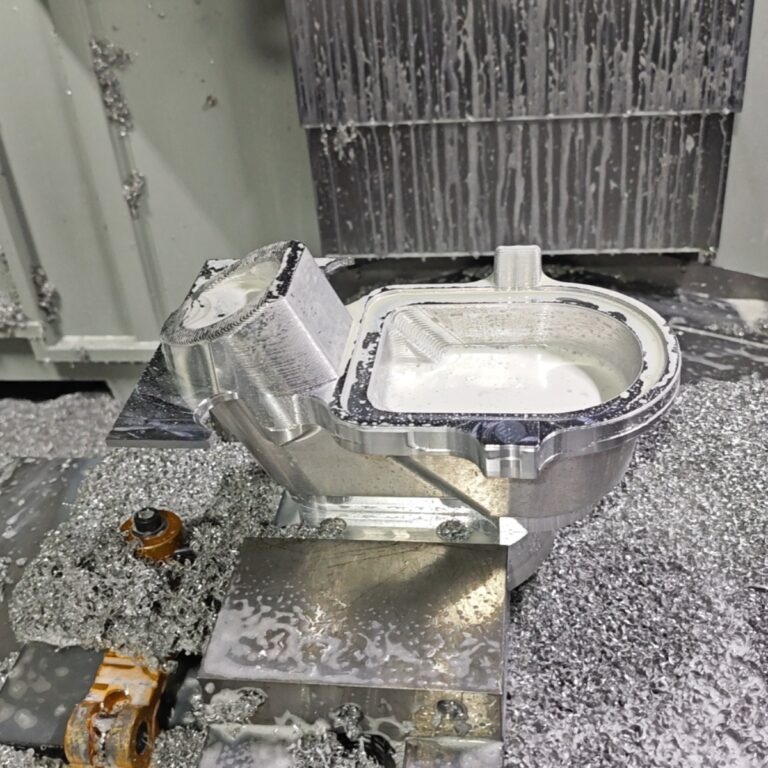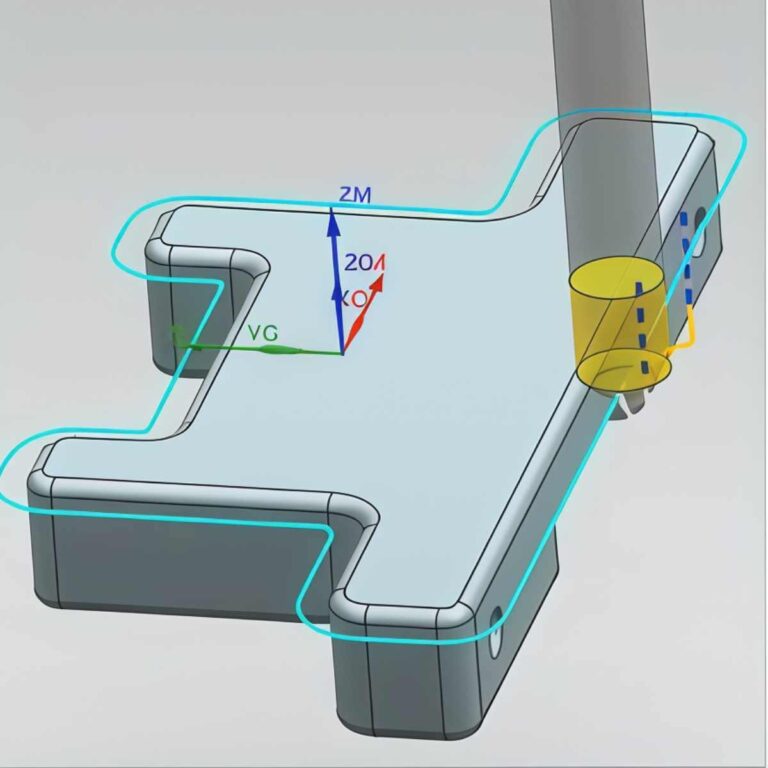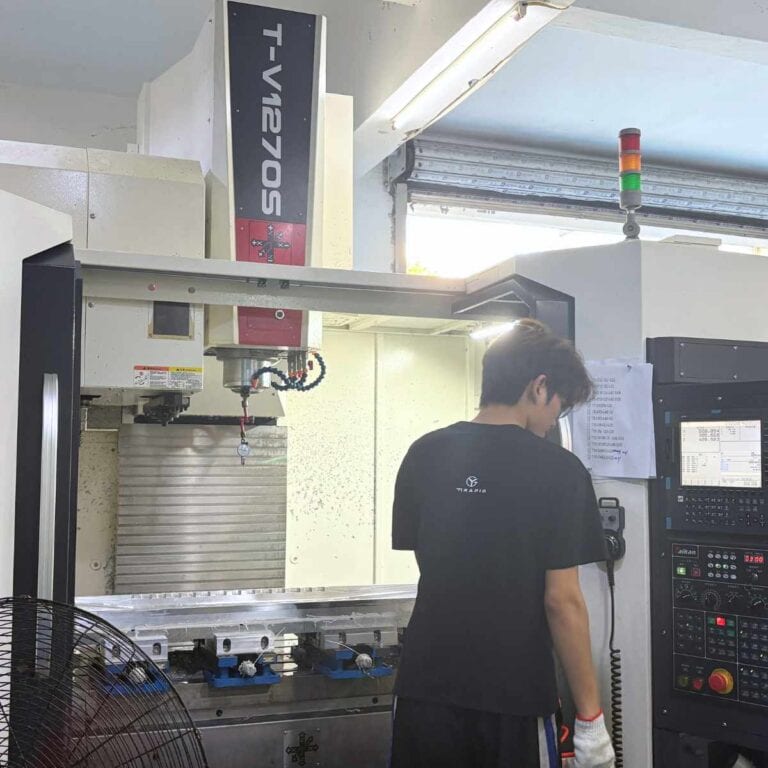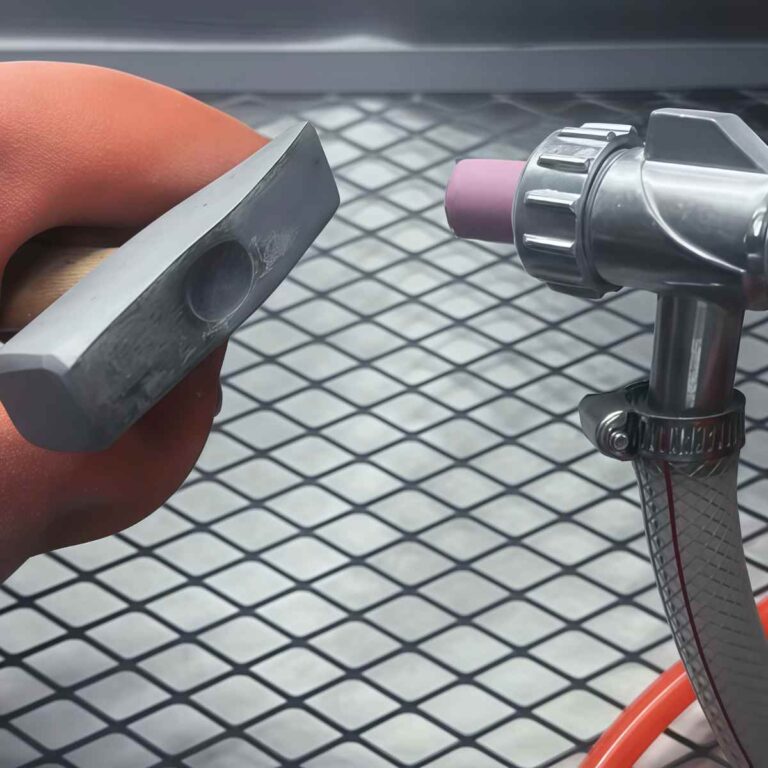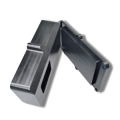In engineering practice, carbon steel vs stainless steel selection plays a crucial role in determining a product’s lifespan, cost, and overall appearance. In this article, I’ll explore both materials in depth — analyzing their composition, structure, performance, processing, and total lifecycle cost — to help you make an informed and practical material selection for your next project.
What Is Carbon Steel
Carbon steel is an iron-based alloy primarily strengthened by carbon. Defined as “low-alloy or non-alloy,” its properties vary with carbon content: low-carbon steel welds and forms easily, medium-carbon steel balances strength and toughness, while high-carbon steel is hard and wear-resistant. Some low-alloy steels are also regarded as part of the carbon steel family in engineering.
Get 20% offf
Your First Order
When selecting carbon steel, my primary criterion is whether its chemical composition clearly defines the minimum content of corrosion-resistant elements such as Cr, Ni, and Mo. If the standard doesn’t specify these elements, and the steel meets the following conditions:
Mn ≤ 1.65%, Si ≤ 0.60%, Cu ≤ 0.60%, it is classified as plain carbon steel. This classification follows the AISI and GB/T system definitions.
Classification By Carbon Content
Low carbon steel (<0.25% C): Commonly used for structural parts and stampings, advantages include weldability and deep drawing, a low yield strength ratio, and good plasticity.
Medium carbon steel (0.25–0.6% C): Commonly used for gears and shafts, after quenching and tempering, it offers a balanced strength and toughness.
High carbon steel (>0.6% C): Used for cutting tools and springs, highly hard and wear-resistant, but difficult to weld and form.
Common Reference Standards For Carbon Steel
AISI/SAE 10xx and 11xx (Composition System):
This series is based on chemical composition. The first two digits indicate the alloy type, and the last two digits represent the carbon content (×100). For example, 1020 indicates a carbon content of approximately 0.20%, with the main elements being Fe + C, Mn ≤ 1.65%, Si ≤ 0.60%, and Cu ≤ 0.60%. 10xx steels are ordinary carbon steels, while 11xx steels contain sulfur for enhanced deoxidation and machinability.
ASTM A36 and A572 (Structural):
ASTM A36 is a low-carbon structural steel with a carbon content of ≤ 0.26% and a yield strength of ≥ 250 MPa. It is primarily used for building beams and frame structures.
ASTM A572 is a low-alloy, high-strength steel with a carbon content of ≤ 0.23% and containing Nb/V/Ti microalloying elements. It has a yield strength of 345–450 MPa and combines high strength with good weldability.
National Standards GB/T 700 and GB/T 1591 (Q235, Q355):
GB/T 700 specifies carbon structural steel (e.g., Q235A/B/C/D) with carbon content ≤ 0.22%, manganese content ≤ 0.70%, and a yield strength of 235 MPa.
GB/T 1591 specifies low-alloy, high-strength structural steel (e.g., Q355A/B/C/D/E) with carbon content ≤ 0.20%, manganese content ≤ 1.70%, and a yield strength of 355 MPa. Suitable for buildings, bridges, and mechanical structures, etc.
What Is Stainless Steel
Stainless steel is an iron-based alloy containing at least 10.5% chromium (Cr), which forms a protective passive film for superior corrosion resistance. The addition of elements such as nickel (Ni) and molybdenum (Mo) enhances strength, ductility, and oxidation resistance, making stainless steel essential in construction, medical, chemical, food, and marine applications.
Types Of Stainless Steel
Stainless steels are categorized by their microstructure and properties:
Austenitic: High in Ni, non-magnetic, excellent formability and corrosion resistance, e.g., 304 and 316 for kitchenware and medical tools.
Ferritic: High in Cr, magnetic, limited weldability, e.g., 430, used in appliances and architectural panels.
Martensitic: Higher carbon content, heat-treatable for hardness, e.g., 410, 420, used for blades and turbine components.
Duplex: Combines ~50% ferrite and austenite phases, e.g., 2205, offers high strength and pitting resistance.
Precipitation Hardening (PH): Strengthened through aging treatment, e.g., 17-4PH for aerospace and pressure vessels.
Common Grades Of Stainless Steel
304: The most common stainless steel, with 18% Cr and 8% Ni, excellent corrosion resistance and formability, widely used in food and architectural applications.
316: Contains 2–3% Mo in addition to 304 composition, offering superior resistance to chlorides—ideal for marine and chemical use.
410: A martensitic grade with 0.15% C and 12% Cr, heat-treatable to ~HRC45, used for knives, pumps, and valves.
2205: A duplex stainless steel with 22% Cr, 5% Ni, and 3% Mo, twice as strong as 304 and highly resistant to pitting corrosion.
Why Compare Carbon Steel vs. Stainless Steel
Carbon steel and stainless steel are among the most used manufacturing materials. Carbon steel offers strength and affordability, while stainless steel provides corrosion resistance and an appealing finish. Choosing between them means balancing cost and durability across performance, application, and maintenance.
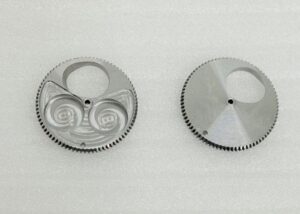
Widespread Application And Confusion In Selection
arbon and stainless steels dominate nearly all major manufacturing sectors:
Carbon Steel: Common in construction (e.g., Q235, ASTM A36 beams), mechanical parts (gears, shafts), and vehicle frames. Due to its strength and affordability, it represents over 85% of global steel production.
Stainless Steel: Essential for food processing equipment, medical tools, chemical containers, and marine structures. Global demand for stainless steel has increased by 5–6% annually in the past decade due to hygiene and corrosion resistance needs.
The main challenges in choosing between them are:
Budget Limitations – Carbon steel costs only 30–50% of stainless steel.
Operating Environment – Stainless steel is preferred in humid, salty, or chemical conditions.
Lifespan and Maintenance – Carbon steel requires coatings, stainless steel is almost maintenance-free.
In my projects, I typically use a “cost vs. environment matrix”: for example, Q355 carbon steel with powder coating for indoor frames, and 316L stainless steel for acid mist environments.
Why The Comparison Matters
The goal of comparing carbon and stainless steel is not merely to determine which is stronger, but to evaluate overall project value across its lifecycle.
Performance: Stainless steel has a yield strength of 200–1000 MPa, while carbon steel ranges from 250–900 MPa—yet stainless offers 10× higher corrosion resistance.
Cost: Carbon steel costs about $600–800/t, while 304 stainless is $1800–2500/t. However, due to lower maintenance, stainless can be more cost-effective long term (lower TCO).
Application Fit: For dry, indoor, or controlled settings, carbon steel is ideal. In corrosive or outdoor environments, stainless ensures longer service life.
Maintenance: Coated carbon steel requires repainting every 3–5 years, stainless steel can last 15+ years with only cleaning.
What Are The Chemical And Structural Differences Between Carbon Steel And Stainless Steel
The key difference between carbon steel and stainless steel lies in composition and structure. Stainless steel gains corrosion resistance from chromium, nickel, and molybdenum, while carbon steel relies on carbon for strength. These variations affect structure, magnetism, and surface protection.、
Elemental Composition Comparison And Microstructural Differences
Carbon steel is composed mainly of iron (Fe) and carbon (C), typically containing 0.05–2.0% carbon. Minor elements like manganese (Mn ≤ 1.65%) and silicon (Si ≤ 0.60%) improve deoxidation and strength. Its microstructure primarily consists of ferrite and pearlite, with cementite (Fe₃C) present in higher-carbon grades.
Stainless steel, by contrast, includes 10.5–30% chromium (Cr), 0–20% nickel (Ni), and 0–8% molybdenum (Mo). Chromium forms a dense oxide layer on the surface, while nickel improves toughness and corrosion resistance. Austenitic grades (304, 316) feature a γ-Fe structure with excellent ductility, ferritic (430) are α-Fe and magnetic, martensitic (410) are hard and wear-resistant.
Mechanism of Passivation Film Formation
The “stainless” property of stainless steel comes from its ability to form a Cr₂O₃ passivation film. When chromium content exceeds 10.5%, it reacts with oxygen to form a dense, 1–3 nm-thick oxide layer that blocks further oxidation. If scratched, the chromium immediately reacts with oxygen to regenerate this layer — a property known as self-healing.
Carbon steel, however, forms a porous Fe₂O₃ layer that allows oxygen to penetrate, causing continuous rusting. This is why it requires coatings such as paint or galvanization.
Magnetic and Surface Appearance Differences
Magnetism:
Carbon steel is strongly magnetic, while stainless steel’s magnetism depends on its type:
Austenitic (304, 316): Non-magnetic or weakly magnetic
Ferritic (430): Strongly magnetic
Martensitic (410): Magnetizable
Hence, a magnet test offers only a rough distinction.
Appearance:
High chromium and nickel content gives stainless steel its silvery, reflective finish, while carbon steel appears darker and oxidizes easily. Polished stainless steel (mirror finish #8) achieves 80–90% reflectivity, compared to 30–40% for plain carbon steel.
What Are The Differences Of Properties Between Carbon Steel And Stainless Steel
The differences between carbon steel and stainless steel go beyond chemistry — they lie in mechanical and physical performance. Carbon steel excels in strength and machinability, while stainless steel offers superior toughness and corrosion resistance. Understanding these property gaps helps engineers choose materials that balance strength, longevity, and cost.
Mechanical Properties Comparison
| Property | Carbon Steel | Stainless Steel | Notes |
| Tensile Strength | 370–700 MPa | 520–1500 MPa | Stainless steel (especially martensitic types) is stronger |
| Yield Strength | 250–450 MPa | 210–1100 MPa | Carbon steel shows more stable yield under load |
| Hardness (HB) | 120–300 | 150–350 | Stainless steel offers better wear resistance |
| Toughness | Moderate | High | Stainless steel resists impact and bending better |
| Elongation | 10–30% | 30–50% | Stainless steel has greater ductility for complex shapes |
Comparison Of Physical Properties
| Property | Carbon Steel | Stainless Steel | Notes |
| Density | 7.75–8.05 g/cm³ | 7.90–8.10 g/cm³ | Nearly identical, minimal weight impact |
| Thermal Conductivity | 50–60 W/m·K | 15–25 W/m·K | Carbon steel conducts heat better, ideal for molds and exchangers |
| Thermal Expansion Coefficient | 11–13 × 10⁻⁶/K | 15–17 × 10⁻⁶/K | Stainless steel expands more under heat |
| Electrical Resistivity | 0.0006–0.0007 Ω·m | 0.0007–0.0008 Ω·m | Higher resistivity makes stainless less conductive |
Performance In High And Low Temperature Environments
At high temperatures, carbon steel softens and oxidizes, with yield strength dropping significantly above 400°C. Austenitic stainless steels like 316 retain mechanical integrity up to 800–1000°C, making them ideal for boilers and chemical reactors.
In low-temperature environments, carbon steel experiences a ductile-to-brittle transition (DBTT around -20°C to -40°C), drastically reducing impact toughness. Stainless steel, especially 304, remains ductile even at -196°C, making it the preferred choice for cryogenic tanks and liquid nitrogen systems.
Which Material Is More Corrosion Resistant
Corrosion resistance is key to metal longevity and cost efficiency. Carbon steel rusts easily in moisture, while stainless steel resists oxidation via a chromium-based passive film. This section compares common corrosion types and protection methods—galvanizing, coating, and passivation—to identify the most durable option.
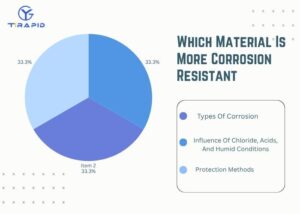
Types Of Corrosion
The “stainless” nature of stainless steel comes from its Cr₂O₃ passive film formed by ≥10.5% chromium. However, under chloride-rich or saline conditions, corrosion still occurs:
Pitting: Localized attack forming small holes, common in 304 stainless steel above 50°C in Cl⁻ environments. 316 stainless steel, with 2–3% Mo, raises its Pitting Resistance Equivalent Number (PREN) to ≥25.
Crevice Corrosion: Happens in gaps like joints or under gaskets where oxygen is limited. Improved design or duplex stainless steels (e.g., 2205) help mitigate it.
Stress Corrosion Cracking (SCC): Occurs when tensile stress and chloride combine. Austenitic stainless steels are prone to SCC, while carbon steels usually fail by corrosion fatigue.
Influence Of Chloride, Acids, And Humid Conditions
In neutral or mildly humid environments, stainless steel self-repairs its passive film, requiring no coating. In the same conditions, carbon steel corrodes at a rate of 0.02–0.05 mm/year, which can increase tenfold in acidic or saline atmospheres.
For instance, in marine air containing 3.5% NaCl, uncoated carbon steel corrodes up to 100–200 µm/year, while 304 stainless steel only shows minor film regeneration marks.
Carbon steel performs poorly in acidic or alkaline media unless coated, whereas 316L stainless steel withstands dilute sulfuric and phosphoric acids, making it a chemical industry favorite.
Protection Methods
Carbon steel relies on external layers for corrosion protection:
Hot-Dip Galvanizing: Zinc coating (70–100 µm thick) delays rusting for 10–15 years.
Coating and Powder Painting: Create a physical barrier, ideal for outdoor and architectural use.
Cathodic Protection: Common in buried or marine structures, using sacrificial anodes to prevent corrosion.
Stainless steel’s natural protection can degrade due to scratches or welding heat. In such cases, acid pickling and passivation (HNO₃ + HF) restore the integrity of the Cr₂O₃ passive layer.
Which Steel Is Easier To Machine And Fabricate
Machinability defines efficiency and cost in manufacturing. Carbon steel, with lower hardness and simpler composition, is easier to cut and form. Stainless steel’s alloying elements—chromium, nickel, and molybdenum—add strength but reduce workability. This section compares both in cutting, welding, and surface treatment efficiency.
Cutting And Forming Performance
Carbon steel
Carbon steel, with a lower hardness (around 120–200 HB), offers high machinability—tool wear is minimal, and cutting speeds can reach 150–200 m/min. Grades like AISI 1020 and 1045 are easy to turn and mill with smooth surface finishes.
Stainless steel
Stainless steel’s chromium-nickel composition creates an austenitic structure that increases toughness but decreases machinability. Tool wear is high, cobalt or TiAlN-coated tools are recommended. For example, 304 stainless steel has a work-hardening rate about twice that of carbon steel, requiring slower feed rates and sufficient coolant.
In forming, low-carbon steels (e.g., Q235) are ideal for cold bending and stamping with a formability limit strain of up to 25%. 304 stainless steel, by contrast, often needs warm or multi-step forming to prevent cracking.
Weldability And Dissimilar Welding
Carbon steel
Carbon steel offers excellent weldability—standard CO₂ or arc welding achieves high-quality joints with stable heat-affected zones (HAZ). Medium-carbon steels require preheating (150–250°C) to reduce cracking risk.
Stainless steels
Stainless steels such as 304 or 316 can be TIG or MIG welded but demand precise heat control to avoid chromium carbide precipitation, which causes intergranular corrosion. Post-weld passivation using HNO₃+HF restores corrosion resistance.
For dissimilar welding (e.g., 304 to Q235), 309L or 310 filler wire is recommended to mitigate thermal expansion mismatch and prevent cracking.
Cost and Lifecycle: What Makes Carbon Steel vs Stainless Steel Different
In engineering design, cost and lifecycle drive material choices. Carbon steel offers low cost and easy machining but needs frequent upkeep, while stainless steel costs more upfront yet provides longer service life and lower maintenance. This section compares both through cost, processing, and durability for smarter decisions.
Raw Material Cost And Price Fluctuations
Carbon steel pricing depends mainly on iron ore and coke, averaging $700–900/ton, with moderate volatility driven by energy and logistics.
Stainless steel, containing costly elements like Cr (18%), Ni (8–10%), and Mo (2–3%), is typically 2–3× more expensive than carbon steel.
For grade 304 stainless steel, nickel alone accounts for ~40% of material cost, making it more sensitive to global market fluctuations.
In short-term projects (<5 years), carbon steel is more economical, while stainless steel offers better lifetime value for long-term use (>10 years).
Manufacturing And Processing Time Differences
Carbon steel machines faster, with cutting speeds of 150–200 m/min, ideal for mass production.
Stainless steel, prone to work hardening and poor heat dissipation, requires slower speeds (60–100 m/min) and increases tool wear by 30–50%.
In welding, carbon steel is straightforward, whereas stainless steel needs controlled heat input to prevent intergranular corrosion.
In a real automation frame project, carbon steel fabrication took ~22% less time compared to 304 stainless steel.
Maintenance Cost And Service Life
Carbon steel requires periodic painting, galvanizing, or coating, with maintenance costs of 3–5% of its material value annually.
Stainless steel needs minimal maintenance and lasts 20–30 years, over twice the lifespan of carbon steel.
In marine conditions, corrosion rates reach 0.1–0.2 mm/year for carbon steel but only 0.01 mm/year for 316L stainless steel.
Total Cost Of Ownership Analysis
From a Total Cost of Ownership (TCO) perspective, carbon steel has lower upfront cost but higher lifetime expenses, while stainless steel offers long-term savings.
| Category | Carbon Steel | Stainless Steel (304) |
| Initial Material Cost | 1.0 | 2.5 |
| Annual Maintenance | 5% | 1% |
| Expected Lifespan | 10 years | 25 years |
| Lifecycle Cost | ≈1.5× initial | ≈1.1× initial |
Which Steel Performs Better Under Different Environmental Conditions
Steel reliability depends on more than just strength — environment plays a key role. Factors like temperature, humidity, oxidation, and sustainability influence service life. Here, I compare carbon and stainless steels under extreme conditions to help engineers choose the most stable and durable option.
Temperature, Humidity, Oxidation, and Fatigue
Temperature Stability: Stainless steel maintains its strength up to 1000°C, while carbon steel loses about 40% strength above 600°C. At subzero temperatures (-100°C), austenitic stainless remains tough, but carbon steel risks brittle fracture.
Humidity and Oxidation: Carbon steel oxidizes rapidly above 60% relative humidity, with corrosion rates up to 0.1 mm/year, whereas stainless steel forms a stable chromium oxide layer limiting corrosion to 0.01 mm/year.
Fatigue Resistance: Stainless steel’s fatigue limit equals ~40% of its tensile strength, outperforming carbon steel (~30%), making it ideal under cyclic loads.
Real Example: In a port machinery project, 316L stainless steel components showed no rust after 8 years of sea exposure, while carbon steel frames required repainting every 3 years.
Sustainability and Environmental Impact
Recyclability: Stainless steel achieves over 90% recyclability, compared to ~80% for carbon steel, though carbon steel requires less energy to remelt.
Carbon Emissions: Producing 1 ton of carbon steel emits ~1.8 tons of CO₂, while stainless steel can reach ~2.9 tons due to complex refining of nickel and chromium.
Sustainability: Despite higher production emissions, stainless steel’s 2–3× longer lifespan results in a lower overall environmental footprint across its lifecycle.
Industry Trend: Modern manufacturers increasingly combine coated carbon steel or low-nickel stainless alloys to optimize sustainability and cost balance.
Applications Of Carbon Steel And Stainless Steel Across Industries
Carbon steel and stainless steel each shine in different industries. Carbon steel is affordable and strong—ideal for construction and machinery. Stainless steel offers corrosion resistance and a clean finish, perfect for humid or hygienic settings. Choosing wisely ensures the best balance of performance and cost.
| Industry | Carbon Steel Applications | Stainless Steel Applications |
| Construction & Outdoor Structures | Used for beams, rebar, bridges, railings, and supports. Offers high strength and low cost but requires anti-rust coating. | Ideal for facades, handrails, cladding, and outdoor installations. Corrosion-resistant, aesthetic, and durable. |
| Automotive & Heavy Machinery | Commonly used in chassis, drive shafts, gears, and load-bearing frames, good machinability and cost efficiency. | Used in exhaust systems, fuel tanks, and decorative components, excellent heat and oxidation resistance. |
| Chemical & Marine Industries | Used for tanks, pipelines, and frames with protective coatings to resist corrosion. | Preferred for reactors, heat exchangers, and offshore platforms, superior chloride corrosion resistance. |
| Food & Medical | Limited use in non-contact parts or temporary fixtures. | Widely used in food processing machines, kitchenware, surgical tools, and medical housings due to hygiene and corrosion resistance. |
| Aerospace & Home Appliances | Utilized in brackets, structural reinforcements, cost-effective option. | Applied to engine parts, aircraft panels, and appliance casings for their high strength and sleek appearance. |
| Renewable Energy: Wind & Solar | Common in solar frames and wind turbine towers with galvanizing for rust prevention. | Used in offshore wind structures and fasteners, offering excellent salt-spray corrosion resistance. |
How To Choose The Right Steel
Choosing the right steel material not only impacts structural safety but also long-term costs and maintenance frequency. Carbon steel is known for its high strength and low cost, while stainless steel, with its corrosion resistance and aesthetic advantages, performs better in harsh environments. I will establish a selection matrix based on four criteria: environment, load, appearance, and budget.
Environment:
Dry indoor settings → Carbon steel is preferred for low cost and easy maintenance.
High humidity, saline, or acidic environments → Stainless steel 304/316L performs best, with a corrosion rate only 1/20 that of carbon steel.
- Load & Stress:·
For heavy load structures (e.g., machine bases, bridges), use low-alloy carbon steel such as Q345 or ASTM A572.
For components requiring fatigue resistance and dimensional stability, select 17-4PH or 316L stainless steel.
- Appearance & Finish:·
If aesthetics are secondary, use painted or galvanized carbon steel.
For mirror finishes or sanitary applications (medical/food), electropolished stainless steel is ideal.
- Budget & Lifecycle Cost:·
Initial cost: Carbon steel ≈ 40–60% of stainless steel.
Maintenance savings: Stainless steel reduces corrosion-related costs by 20–30% over 5 years.
FAQs
Which Is Better Carbon Steel Or Stainless Steel?
In my experience, neither is universally “better.” Carbon steel offers higher strength-to-cost efficiency, reaching 700 MPa yield strength, ideal for heavy-load structures. Stainless steel, however, resists corrosion 20× better and lasts up to 25 years in marine or chemical environments. I choose based on environment and lifecycle cost.
Why Use Stainless Steel Instead Of Carbon Steel?
I use stainless steel when corrosion resistance or hygiene is crucial. Its chromium content (≥10.5%) forms a self-healing oxide film, reducing corrosion by 95% compared to untreated carbon steel. It’s ideal for food, medical, or coastal applications where durability outweighs material cost.
Can Carbon Steel Be Machined By CNC?
Yes, carbon steel is highly machinable. I typically machine grades like AISI 1045 or Q235 using carbide tools. With cutting speeds around 120–180 m/min and proper coolant, surface roughness can reach Ra 1.6 µm. Its rigidity allows precision turning, milling, and drilling with minimal deformation.
Can Stainless Steel Be CNC Machined?
Absolutely, but it’s more challenging. Austenitic grades like 304 and 316 harden quickly, requiring slower feed (60–90 m/min) and coated carbide tools. I use high-pressure coolant to prevent work hardening. When optimized, CNC stainless parts can reach ±0.01 mm tolerance with mirror finishes.
What Are The Disadvantages Of Carbon Steel?
Carbon steel rusts easily—oxidation can begin within 24 hours in 80% humidity. It also lacks chemical resistance, has lower fatigue life, and needs regular maintenance or coating. In coastal or acid environments, unprotected carbon steel may lose 30% strength within 3 years.
Conclusion
In summary, carbon steel and stainless steel each have their advantages. Carbon steel’s high strength and low cost make it suitable for high-volume structural parts, while stainless steel, with its superior corrosion resistance and aesthetics, offers long-term economical performance in harsh environments. When selecting materials for a project, one should comprehensively consider the environment, load, lifespan, and budget, establishing a scientific selection matrix to achieve the optimal balance between performance and cost. What are your needs or thoughts on stainless steel and carbon steel? We look forward to hearing from you!

